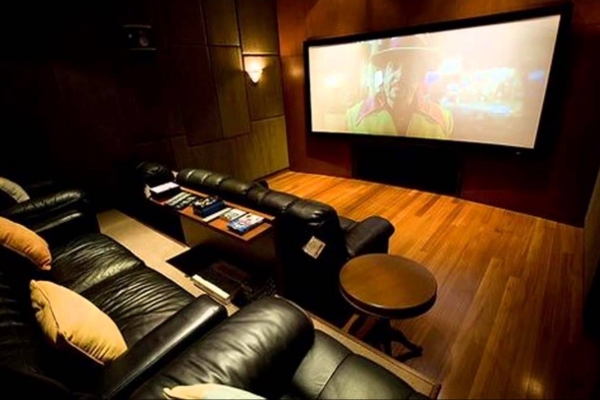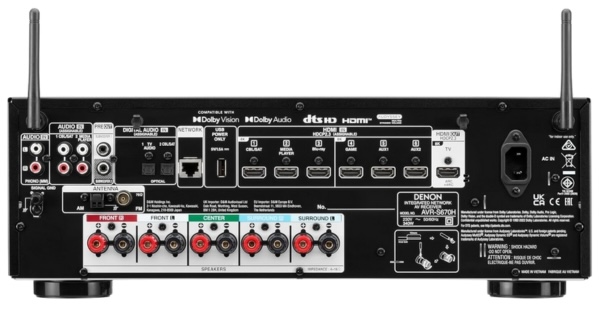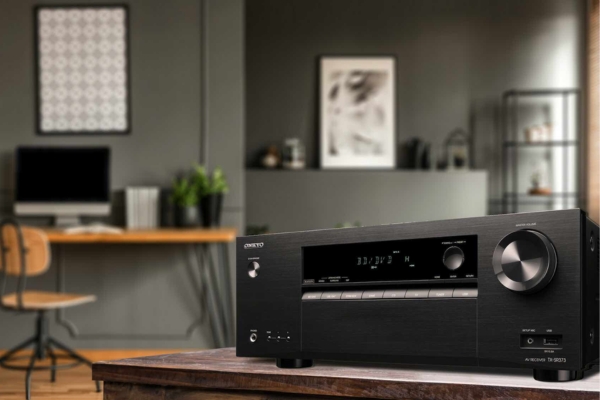Home Theater Receivers Explained: A Simple, In-Depth Guide
A home theater receiver, often referred to as an AV (Audio/Video) receiver, serves as the central hub of any modern home entertainment setup. It manages all the audio and video inputs and outputs, connects your various media sources, and drives your surround sound speaker system.
While its primary function is to deliver immersive, theater-like sound to your living room, a good receiver can also offer a range of advanced features for gamers, music lovers, and smart home users alike.
With numerous features and specifications available, choosing the right model can feel overwhelming. This Home Theater Receivers Explained guide aims to break down the essentials, explore use cases, and highlight what matters most for anyone looking to buy one. By the end, you’ll have the confidence to select a receiver that suits your room, setup, and listening preferences.
What Does a Home Theater Receiver Do?
A home theater receiver serves as the control center for an entire entertainment system. Its primary job is to receive audio and video signals from connected devices—such as streaming boxes, Blu-ray players, game consoles, turntables etc., and manage how those signals are processed, amplified, and distributed.
For video, the receiver acts as a switcher, sending the selected source’s signal to a television or projector via HDMI. For audio, it decodes the incoming signal, whether it’s basic stereo or advanced surround sound formats like Dolby Atmos, and routes each channel to the correct speaker in the system: front, center, surround, and subwoofer.

The AV receiver also performs audio processing tasks, such as adjusting volume levels between speakers, applying equalization settings, and managing bass crossover frequencies. This ensures a balanced and immersive sound experience.
In essence, the AV receiver replaces the need for multiple separate components by combining amplification, signal management, format decoding, and connectivity in a single, centralized unit.
Understanding Power and Speaker Matching
Home Theater Receivers include built-in amplifiers that power multiple channels—each connected to a speaker in your setup.
The amount of power you need depends on your speakers’ wattage requirements. Each speaker is rated to operate within a certain power range, and for optimal performance and minimal distortion, the receiver should deliver power at the higher end of that range.
For instance, if your speakers can handle between 25 and 100 watts, using a receiver that delivers close to 100 watts per channel will provide richer sound, better dynamics, and reduced chances of distortion during loud scenes.
How to Match a Receiver to Your Room Size
When choosing an AV receiver, it’s important to consider not just the number of speakers or wattage, but also the physical space where the system will be used. The size and shape of the room directly affect how audio behaves.
In a smaller or more enclosed space, such as a bedroom or compact living room, a 5.1 or 7.1 channel receiver with moderate power output is usually sufficient. Overpowering a small room with excessive volume can lead to muddiness rather than clarity.
Larger or open-plan areas, especially those with high ceilings or hard surfaces, benefit from more power and additional channels, which help fill the space with balanced sound and prevent audio from feeling “thin” or distant.

Home theater receivers with more wattage offer better dynamic range in spacious environments, delivering clearer dialogue and more impactful sound effects. Additionally, larger rooms may benefit from multi-subwoofer configurations or advanced calibration tools to address echo or dead zones.
Evaluating the dimensions, furnishings, and acoustic characteristics of the room can help determine the right combination of power, speaker placement, and processing capability, all of which are important when factoring in the receiver you want.
Choosing the Right Number of Channels
AV receivers are available in configurations ranging from five to multiple channels for bigger and more professional AV receivers.
A “channel” refers to a separate audio output path for a speaker. A basic 5-channel system includes front left, front right, center, and two surround speakers. More advanced setups add additional surround or height speakers.
A 7-channel receiver is often recommended for its versatility. It allows a user to expand from a simple 5.1 system to include additional speakers for either rear surround sound or height effects.
Some receivers also support features like bi-amping, where two amplifier channels are used per speaker to enhance power and detail. This is useful for audiophiles or those with power-hungry front speakers.
Room Calibration Explained
Many modern AV receivers include automatic room calibration systems designed to optimize audio based on the unique layout and acoustics of a space. This feature is often underused or overlooked, despite its ability to significantly improve sound quality.
During the setup process, a small calibration microphone is placed at the listener’s main seating position. The receiver then plays a series of test tones through each speaker and measures the sound with the microphone. Using this data, the receiver adjusts settings to account for the room’s acoustics.
These adjustments compensate for factors like uneven furniture placement, wall reflections, or irregular speaker angles. Some systems even allow measurements from multiple seating positions to create an optimized soundfield across a larger listening area.

Surround Sound Formats: Dolby Atmos and DTS:X
Once an AV receiver has at least seven channels, it can begin to support advanced audio formats like Dolby Atmos and DTS:X. These technologies go beyond traditional surround sound by adding a vertical dimension, allowing sound to come from above the listener.
This creates a more immersive audio environment, which can make the sound feel like rain is falling from the ceiling or a helicopter is flying overhead. Achieving this effect typically involves in-ceiling speakers or up-firing speaker modules.
Gaming Features for the Next Generation
Gamers should look for receivers equipped with modern gaming features. These include support for 4K resolution at 120Hz, which ensures extremely smooth and responsive graphics.
Another feature, Auto Low Latency Mode (ALLM), allows the receiver and TV to automatically reduce delay between controller input and on-screen action—critical for fast-paced gaming.
Enhanced Audio Return Channel (eARC) is another important feature, as it allows high-quality, uncompressed audio to be sent from a compatible television to the receiver.
This ensures gamers hear sound effects and dialogue exactly as intended. Variable Refresh Rate (VRR) is also beneficial, as it enables the TV to dynamically match the console’s output frame rate, reducing visual stutter or screen tearing.
AV Receiver Connections That Matter
One of the most important aspects of choosing a receiver is the variety and quality of its input and output connections.
The majority of modern devices connect via HDMI (High Definition Multimedia Interface), which transmits both audio and video in a single cable. For simplicity and future expansion, it’s best to choose a receiver with more HDMI inputs than currently needed.

The most up-to-date HDMI version is HDMI 2.1b, which supports higher video resolutions and refresh rates including 8K60 and 4K120, and resolutions up to 10K. Dynamic HDR formats are also supported, and bandwidth capability is increased up to 48Gbps for much better image quality.
Some HDMI inputs also support ARC or eARC, allowing the TV to send audio back to the receiver without needing a separate audio cable. This is especially useful for streaming apps built into smart TVs.
Even if a user owns older equipment, HDMI is backward compatible, meaning devices with older versions of HDMI will still work—they just won’t support newer features.
In cases where a source device doesn’t support HDMI, traditional inputs like optical digital audio, RCA analog audio, or even dedicated phono inputs for turntables may be available on the receiver.
Wireless Surround Sound: A Growing Trend
Although traditional surround systems require running speaker wires across the room, wireless surround sound has become increasingly viable.
Some newer AV receivers support wireless connections to specific compatible speakers, allowing for a cleaner, more flexible setup. In some systems, even the subwoofer can be wirelessly connected, reducing cable clutter.
Another option is to use a wireless surround transmitter and receiver kit. These systems send the audio signal from the AV receiver to rear speakers using radio frequency (RF) or Wi-Fi-based transmission.
While convenient, it’s worth noting that some wireless setups may introduce a slight delay (latency) or compression, depending on the technology used. That said, most well-designed systems are engineered to keep any audio lag or quality loss minimal and imperceptible during typical viewing.
For audiophiles or those with demanding ears, a wired connection still offers the most consistent performance. But for most home theater users, especially in rooms where wiring would be awkward, modern wireless surround systems deliver fantatsic sound quality with few compromises.

Music Streaming and Multi-Room Audio
Modern AV receivers often come with built-in Bluetooth and Wi-Fi, allowing users to stream music directly from smartphones, tablets, or computers. Many also support high-resolution audio formats, such as FLAC and DSD, which preserve greater detail and clarity than compressed files like MP3s.
Some receivers integrate with multi-room music platforms. These systems let users play different music in different rooms or the same music throughout the home, controlled through an app or voice command. However, to ensure smooth performance, it’s advisable to stick to a single ecosystem across all devices in the system.
Convenient Control Options
Today’s home theater receivers offer more control options than ever. Most include traditional remotes with customizable functions and support for HDMI-CEC, a feature that allows a television remote to control the receiver as well—provided both devices support it.
Many receivers also offer mobile apps that turn a smartphone or tablet into a full-featured remote, giving users access to volume, source selection, and streaming services right from their device.
Universal remotes are another solution, especially for those with multiple entertainment components. These remotes can be programmed to control several devices with a single controller, simplifying the user experience.
Voice assistants have added yet another layer of convenience. Some receivers work with popular voice control platforms, allowing users to control the system using spoken commands. For ultimate convenience, voice control can also be used to manage multi-room audio systems, linking or unlinking different rooms.
Home Theater Receivers Explained
Understanding the role of an AV receiver is essential to building a great home entertainment system. From decoding audio formats to powering your speakers and managing all your connected devices, the receiver quietly does the heavy lifting behind the scenes.
With so many models and features available, it’s easy to feel overwhelmed at first—but with the right knowledge, making the right choice becomes far less intimidating.
Whether you’re planning a full surround sound setup or simply want better sound than your TV can offer, the essentials are now clearer: Home Theater Receivers Explained.
By focusing on how they work, what they’re designed to do, and how to match one to your space and needs, you’re well on your way to creating a home audio experience that’s both immersive and future-ready.
Check out more from our Soundrating Blog
How to Connect All Your Devices to One Audio Receiver
A Beginner’s Guide to Stereo Receivers
Optimize Your Setup: Smart Home Theater Receiver Placement Tips

I am a passionate and skilled car audio enthusiast with 15 years of experience in the industry. My journey started when I replaced my first set of factory car speakers, sparking a deep love for high-quality sound. Since then, I have worked as a representative for renowned brands like Kenwood and Alpine.
With a background in both retail and distribution, I have developed a comprehensive understanding of the car audio market. Currently a certified (MECP) installer in the Mobile Electronics industry, my expertise lies in delivering top-notch audio installations. My knowledge, coupled with my genuine passion, makes me the go-to professional for all car audio needs.
